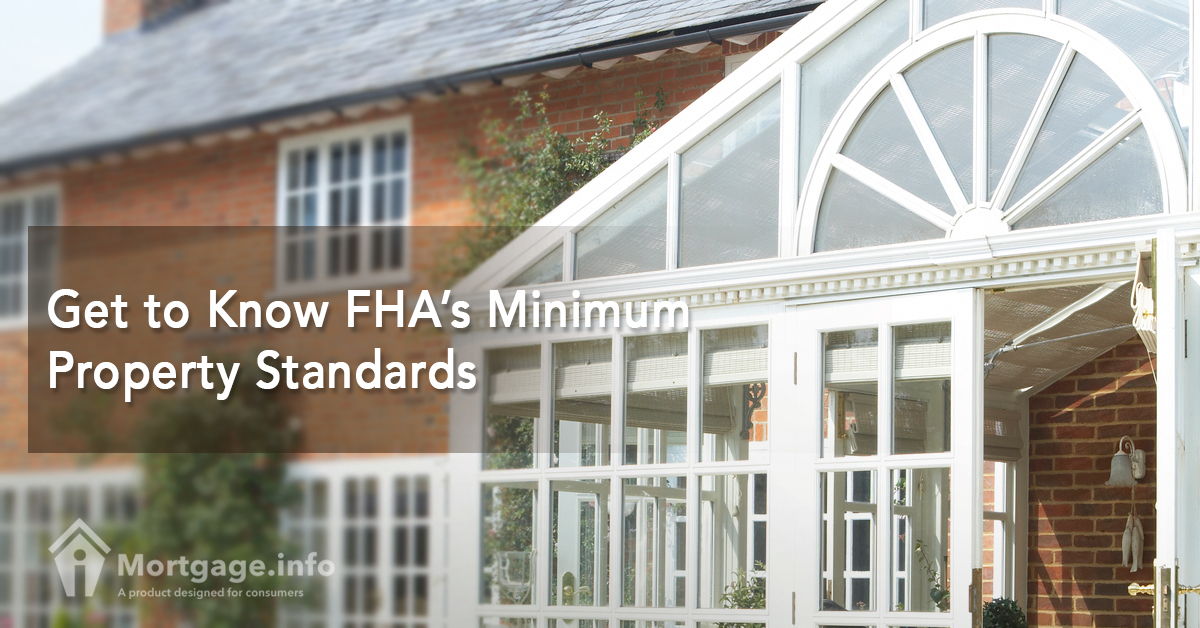It’s not just you who need to qualify for an FHA loan. The house you want to finance must also meet the FHA’s minimum property standards (MPS). These MPS supplement existing building codes by enforcing durability standards.
“Homes and projects financed by FHA-insured mortgages are the collateral for these loans and their lack of durability can increase FHA’s financial risk in the event of default,” according to the HUD, which oversees the FHA.
Eligible Properties
The Federal Housing Administration insures loans that are used to buy one- to four-unit primary residences. For the property to be insurable, it must be safe, sound and secure to live in. This includes the immediate environs, such as streets and facilities, surrounding the property.
FHA’s Minimum Property Standards
Specifically, the house must conform to prevailing FHA’s property standards, mainly:
- Be free of any hazards, such as radioactive materials, toxic chemicals, flood, erosion, excessive noise, and inadequate drainage.
- Have a viable sewage system for safe disposal of sewage waste.
- Have a positive drainage and related mitigation systems for standing water like gutters and downspouts.
- Have a sufficient and continuous supply of potable water, including domestic hot water.
- Be free of termite infestation.
- Have a safe and adequate access for pedestrians and vehicles to and from private or public streets.
- Be free of any defective conditions arising from decay, poor workmanship, leakage, dampness, termites and more until these defects have been remedied and the damage eliminated.
- Have natural ventilation to prevent excessive dampness and heat that contribute to the decay of the structure.
Have foundations that are able to withstand loads for residential structures.
- Have an adequate crawl space for plumbing and wiring, as evidenced by the appraiser’s ability to crawl into it for inspection.
- Have a durable and economical-to-maintain roof.
- Have mechanical systems that are safe, durable, protected from any destructive elements, and have adequate capacity.
- Have an adequate heating system.
- Have available electricity for lighting and appliances in the home.
- Have no deficiencies that affect the safety and health of the occupants, such as steps without a handrail; broken windows, doors or steps; and inadequate or blocked doors. These would have to be repaired or corrected.
- Be inspected for any lead-based paint and hazards. The appraiser must take note if the home is built before 1978 and inspect all interior and exterior surfaces of the house. The same procedure is applicable to condominium units.
Making Repairs
The appraiser will develop a cost approach for any necessary corrective work to be done on identified hazards or deficiencies. As the loan may be declined pending any structural repairs, it’s best to work with the seller.
You could offer a higher price so you can repay the seller for the cost of repair. Or you can ask to lower the price and foot the repair bill.
To be clear, the FHA will not require repairs on conditions that do not affect the marketability of the property. These include peeling interior paint or plaster, missing shrubbery, carpets (unless they are so soiled they affect the market value of the property), and worn-out wood floor finish.
Another option is to go for the FHA 203k loan. This mortgage is ideal for homes that require extensive repairs that are not insurable under FHA’s minimum property standards.

